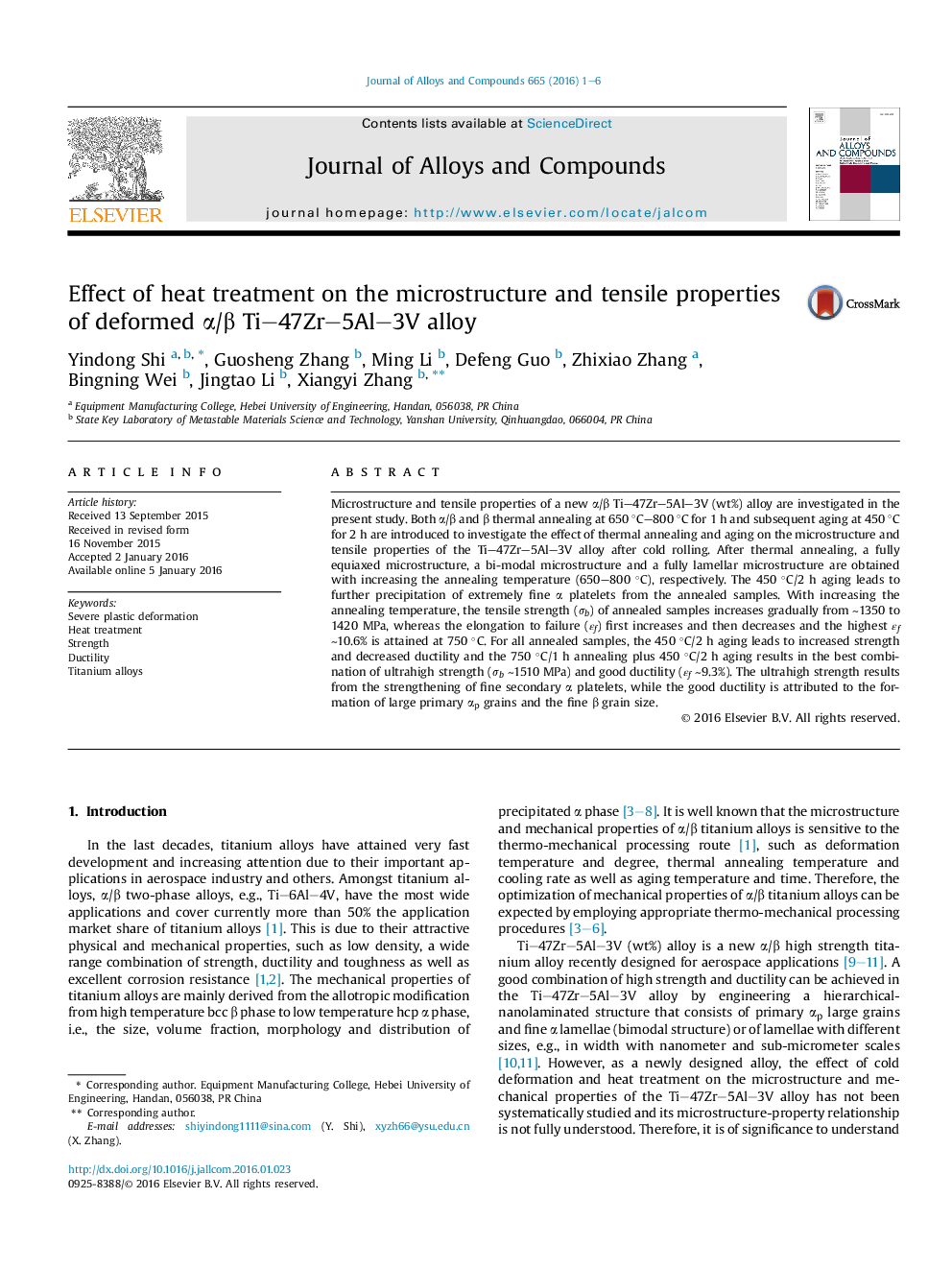| Article ID | Journal | Published Year | Pages | File Type |
|---|---|---|---|---|
| 1606798 | Journal of Alloys and Compounds | 2016 | 6 Pages |
•Microstructure and tensile properties of Ti–47Zr–5Al–3V are studied.•The alloy is processed by combinations of deformation and heat treatments.•The optimum heat treatment parameters are obtained under property evaluation.•An exceptional combination of ultrahigh strength and good ductility is achieved.
Microstructure and tensile properties of a new α/β Ti–47Zr–5Al–3V (wt%) alloy are investigated in the present study. Both α/β and β thermal annealing at 650 °C–800 °C for 1 h and subsequent aging at 450 °C for 2 h are introduced to investigate the effect of thermal annealing and aging on the microstructure and tensile properties of the Ti–47Zr–5Al–3V alloy after cold rolling. After thermal annealing, a fully equiaxed microstructure, a bi-modal microstructure and a fully lamellar microstructure are obtained with increasing the annealing temperature (650–800 °C), respectively. The 450 °C/2 h aging leads to further precipitation of extremely fine α platelets from the annealed samples. With increasing the annealing temperature, the tensile strength (σb) of annealed samples increases gradually from ∼1350 to 1420 MPa, whereas the elongation to failure (εf) first increases and then decreases and the highest εf ∼10.6% is attained at 750 °C. For all annealed samples, the 450 °C/2 h aging leads to increased strength and decreased ductility and the 750 °C/1 h annealing plus 450 °C/2 h aging results in the best combination of ultrahigh strength (σb ∼1510 MPa) and good ductility (εf ∼9.3%). The ultrahigh strength results from the strengthening of fine secondary α platelets, while the good ductility is attributed to the formation of large primary αp grains and the fine β grain size.
